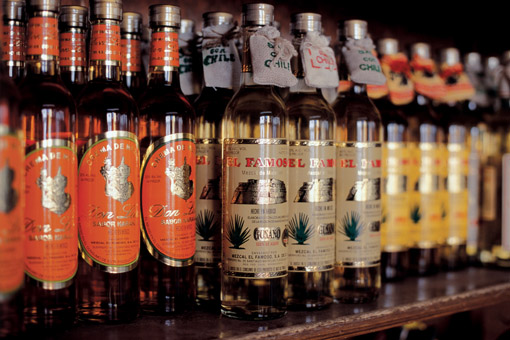Mezcal used to be sniffed at by Mexican sophisticates as the slightly less respectable cousin of tequila—a fiery peasant’s drink consumed in dark corner bars or rural ranchos in Oaxaca, where 94 percent of Mexico’s mezcal is produced. But that is no longer the case. For many trend-setters in the capital and elsewhere, mezcal has become a symbol of the nation’s pre-Colombian roots and its artisanal culture.
Domestic tastes have only just caught up to the drink’s increasing popularity abroad. According to Mexico’s Secretaría de Agricultura, Ganadería, Desarrollo Rural, Pesca y Alimentación (Secretariat of Agriculture, Livestock, Rural Development, Fisheries and Food), exports of mezcal grew 120 percent between 2006 and 2012. It’s now served in some of the swankiest restaurants in New York and Paris.
“Mezcal has become a mark of sophistication,” says Raúl Zamora, co-owner of Mezcal El Cortijo, one of the top-selling brands.
For connoisseurs at home and abroad, mezcal’s appeal lies in its diverse flavors and aromatics. Like wine, no two batches are the same. The liquor traces its history to metzcalli, a powerful pre-Colombian elixir imbibed by shamans and made from the syrup of the agave plant. With the arrival of the Spaniards and their knowledge of distillation and fermentation, mezcal was born.
Like champagne, it is strongly identified with specific locales. Tequila, in fact, is a type of mezcal identified with the town of Tequila, in the state of Jalisco, and made from blue agave. Under Mexican regulations, mezcal must be distilled entirely from the agave plant, but tequila can be mixed with other alcohol. While mezcal is prominently featured in cocktails, it is actually meant to be sipped, and pairs well with traditional Mexican food.





